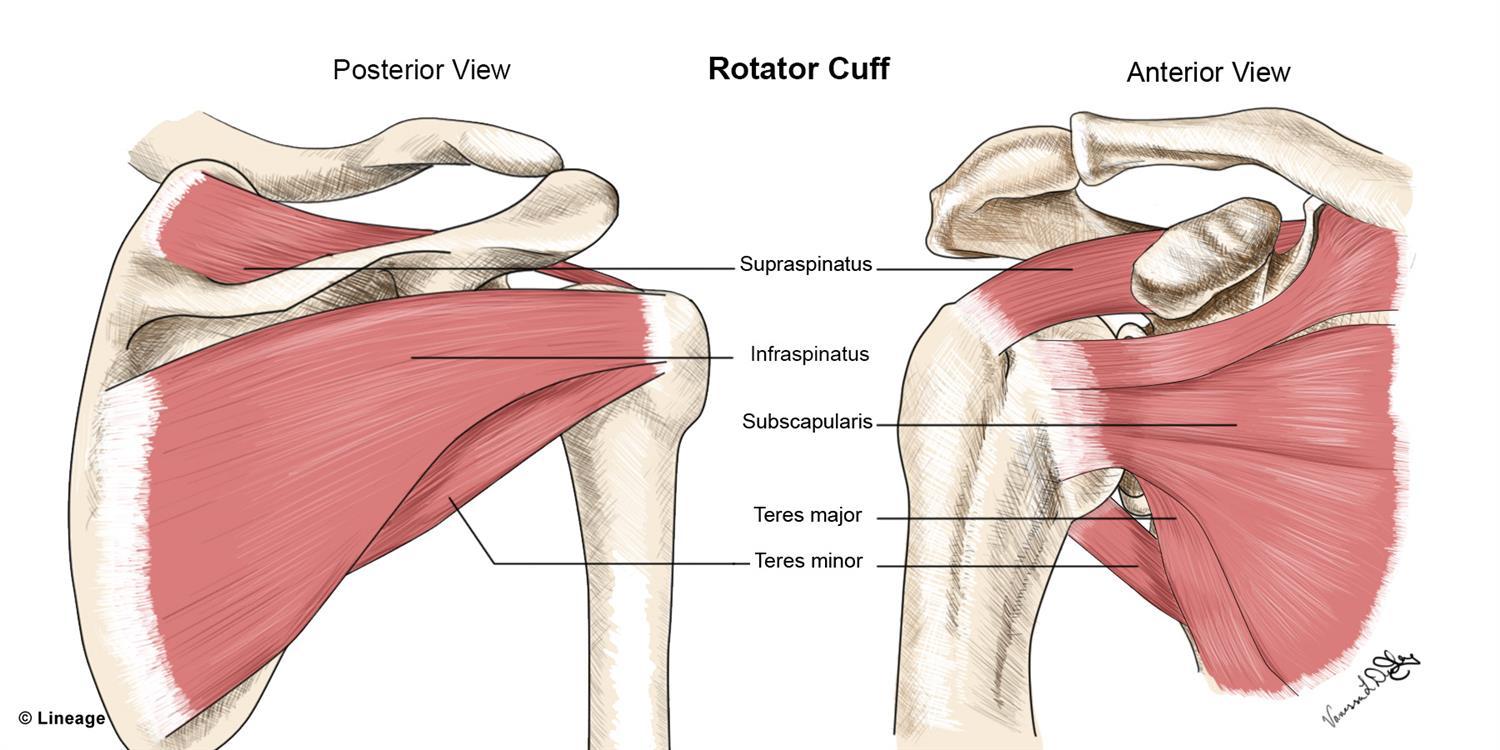
01 Nov The rotator cuff: A guide
Kobe Bryant (basketball), Roger Clemens (baseball), Eric Decker (football), Maria Sharapova (tennis). Four pro athletes; four different sports. Yet what do they all have in common? Rotator cuff injury.
But rotator cuff injuries are common in non-athletes as well. Falls, car accidents, overuse/repetitive stress (from work or hobbies), and age are all reasons you may experience an injury to the rotator cuff at some point in your life. Once injured, even basic daily tasks such as washing your hair, driving a car, reaching into a cabinet, and carrying groceries become difficult and painful.
But what would you say if I told you that the rotator cuff wasn’t a thing?
What is the rotator cuff?
Okay, to be fair, it is a thing. It just may not be exactly what youthink it is.
The rotator cuff is not one single body part like the name would suggest. Rather, it’s made up of FOUR muscles originating on the scapula (aka – shoulder blade) and attaching on the humerus (aka – upper arm bone). The muscles of the rotator cuff are the primary stabilizers of your shoulder joint’s “ball in the socket”. These muscles work as a team to rotate and raise the arm, and stabilize the humerus (aka – keeping your shoulder from dislocating every time you raise your arm or catch yourself on the railing when walking down stairs). It’s named as such because when viewed together, the muscles appear to form a cuff around the joint.
Components and movement
Okay. We’re about to get a little bit geeky, so if you want the specifics, carry on. If you’ve gotten the gist, skip to the next section.
The following muscles work together to form the rotator cuff.
Supraspinatus
Infraspinatus
Subscapularis
Teres minor
Honorable mention: Long head of biceps
Studies have shown that dysfunction in the biceps tendon is highly correlated with injury or weakness in the other rotator cuff muscles.
Frequency of injury to the rotator cuff
Robert Fay is the owner and clinical director at Armonk Physical Therapy and Sports Training in Armonk, New York. Fay says that approximately 80% of shoulder patients at Armonk PT are being treated for rotator cuff issues. This is not surprising seeing as the shoulder is the most mobile, yet least stable, joint in the body.
Fay says, “Rotator cuff muscles shut down in response to shoulder injury and need to be retrained, or they will become compensated for by our bigger shoulder muscles like the deltoids, pecs, biceps, and lats.”
When one or more of the muscles are weak or overused, it can cause any number of problems in the shoulder. “These imbalances can lead to further shoulder deterioration as we age,” says Fay.
How does this affect me?
If the rotator cuff consists of four different muscles, each with different functions, you need to know exactly which one is injured so can treat the shoulder effectively.
Further, because the shoulder is such a complex joint and the muscles of the rotator cuff are working together as a team, an issue with one muscle often means another will quickly compensate and/or develop an associated pathology (e.g. an infraspinatus strain may result in tendonitis of the bicep).
When it comes to treatment of rotator cuff issues, one size definitely does not fit all. A physical therapist will often spend a lot of time determining which muscle is injured, which is weak, and which is overused so they can develop an appropriate recovery plan for you.
Massage and rotator cuff issues
Massage can be enormously effective in helping to decrease pain, increase range of motion, and increase suppleness and flexibility of the affected tissue. “So many people compensate for shoulder instability by using other muscles. Massage therapy is very helpful in releasing tone in the pec minor, biceps, latissimus dorsi, and the deltoids. Releasing compensatory tone in these muscles improves our ability as physical therapists to strengthen the deeper rotator cuff muscles,” says Fay.
Having shoulder issues?
I’d love to help you relieve your shoulder pain. Get yourself scheduled here https://www.schedulicity.com/scheduling/QF4QB4
Peace,
Margaret
(616) 263-6090 cell
MargaretHansenMMT@gmail.com


No Comments